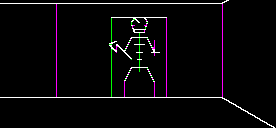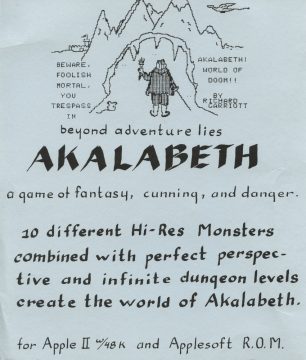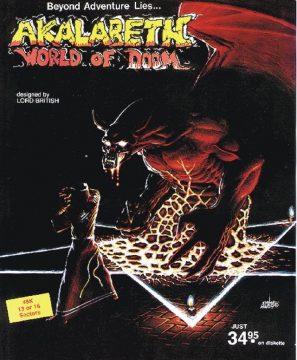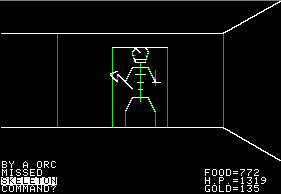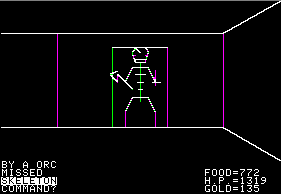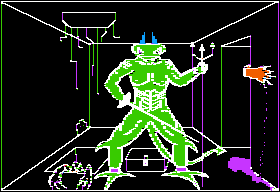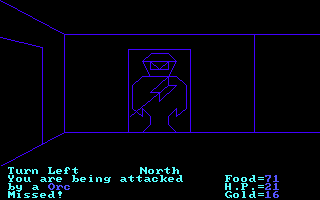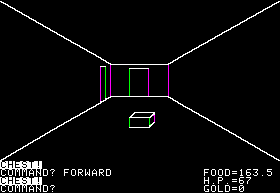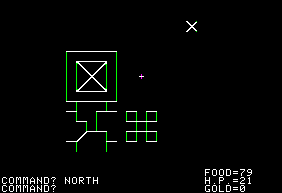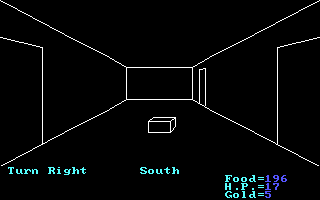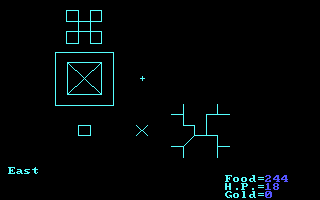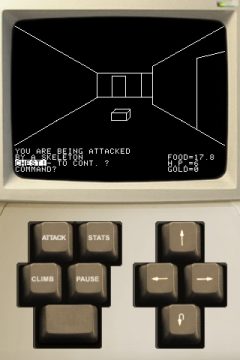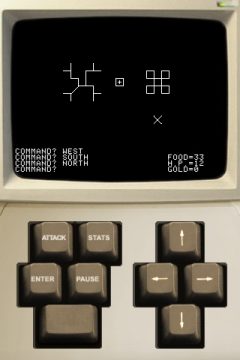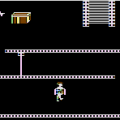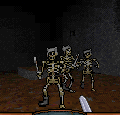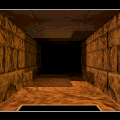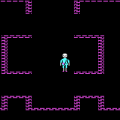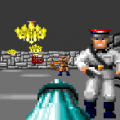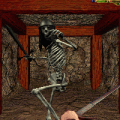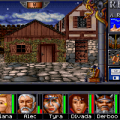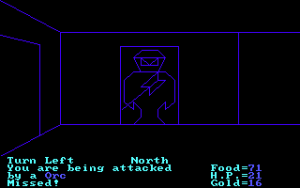- Ultima (Series Introduction)
- Akalabeth
- Ultima I: First Age Of Darkness
- Ultima II: Revenge of the Enchantress
- Ultima III: Exodus
- Ultima IV: Quest Of The Avatar
- Ultima V: Warriors of Destiny
- Ultima VII: The Black Gate
- Ultima VI: The False Prophet
- Ultima VII Part 2: Serpent Isle
- Ultima VIII: Pagan
- Ultima Underworld: The Stygian Abyss
- Ultima Underworld II: Labyrinth of Worlds
- Arx Fatalis
- Worlds of Ultima: The Savage Empire
- Ultima Worlds of Adventure 2: Martian Dreams
- Ultima IX: Ascension
- Lord of Ultima
- Ultima Online
- Ultima: Escape from Mt. Drash
- Ultima: Miscellaneous
- Richard Garriott (Interview)
Many years ago the Dark Lord Mondain wandered the land spreading death and evil in his wake. He was banished by a hero named British, who now rules the land wisely and justly. But Mondain’s evil has long consequences, and British has called for would-be knights to venture forth and vanquish the evil monsters plaguing the land of Akalabeth. Tis’ your duty to help rid the world of the foul beasts infesting it! Art thou prepared for grand adventure?
So begins Akalabeth: World of Doom, which while not the first role-playing game published for home computers, is among the contenders. Originally titled D&D28b, Akalabeth is the end result of a long series of hobbyist games based on Dungeons & Dragons, and the first in the series with computer graphics. The game begins with the player picking a lucky number, a difficulty level from 1-10, rolling up a character, and picking a class (Fighter or Mage). Fighters can use stronger weapons, while Mages have greater control of the Magic Amulet item. Play consists of wandering the overworld, finding towns at which to shop for supplies and the castle of Lord British to receive quests to slay a particular foe, and then diving into multi-level dungeons to find treasure and fight monsters. Fighters can use the rapier or bow & arrows to do additional damage, while Mages can choose which spell effect they cast when using a magic amulet, including creating ladders up and down dungeon levels, or transforming into a mighty Lizardman with vastly increased stats.
The majority of the game is spent in these dungeons, which are randomly generated based on the player’s “lucky number”. Each is packed with weapons, magic amulets, gold and a wide variety of denizens and monsters. These monsters range from the simple thief or staple skeleton to brutal creatures like the Wraith or Daemon, or the insidious Gremlins that steal your food, condemning you to a quick death of starvation. Several monsters show the creator’s influences clearly, such as the ‘Mind Whipper’, ‘Wandering Eyes’, ‘Tangler’, and ‘Balron’ (D&D’s Mind Flayer, Beholder and Roper, and Tolkien’s Balrogs). The actual gameplay is very simple (find British, kill monster, report to British, repeat), but strangely addictive once the nuances of the game are mastered.
Akalabeth belongs to the earliest era of computer games, and is very simplistic by today’s standards. Garriott has stated the game was officially released in 1979, but copies don’t appear to have made it into any time of circulation until 1980. The original Apple II game was written in Applesoft BASIC, and anybody who could read the code was capable of modifying the game to their liking, such as altering the Magic Amulet to always turn the player into a Lizardman. Various other simple tricks can manipulate the game as well; the Amulet’s spell effect is chosen from a counter which is based on how many actions the player has taken, and simply counting actions allows the player to choose their spell. Origin Systems for a time had the original Apple II source code of Akalabeth for download on their website’s FTP server, but the site no longer exists. Mirrors of the source code exist, and one is linked below. For the title screen of Akalabeth, Richard Garriott identified himself by the name “Shamino Salle Dacil”; he would adopt the pseudonym Lord British for the release of Ultima two years later. He is identified as such in the 1998 DOS port.
For many years Akalabeth was an Apple II exclusive and rather obscure for DOS gamers. Fan author Paul Robson wrote a version of Akalabeth for windows SDL in the mid-’90s, but it wasn’t until 1997 that an official IBM PC version of Akalabeth, became available. Written by Corey Roth and Nathan Tucker and released on the Electronic Arts Gold Classics Ultima Collection to promote the impending release of Ultima IX, this version of Akalabeth adds ‘Ultima 0’ to the title, making Akalabeth finally an official part of the series. It also adds MIDI music from Ultima III as well as save and restore functions, absent in the original Apple II release. The iOS version, released in 2011, is essentially an emulation of the Apple II version. The top part of the screen shows the graphics, which the bottom contains the interface. Set up to look like an Apple II, the various keys pop up according to context, allowing relatively easy play without the need for a full keyboard.
Comparison Screenshots
